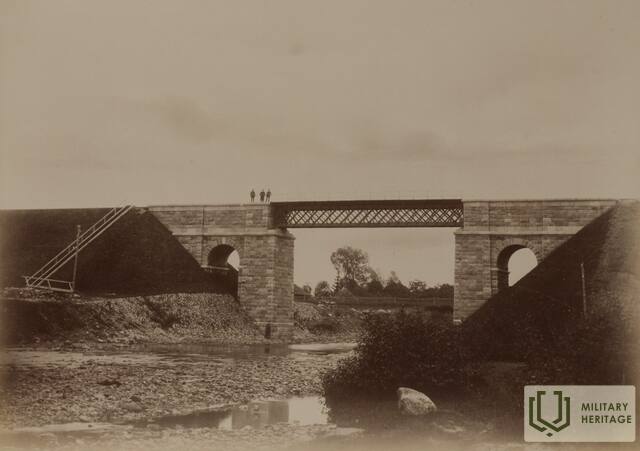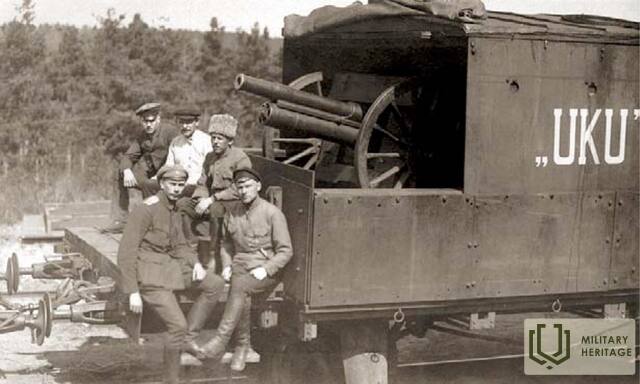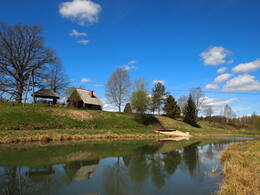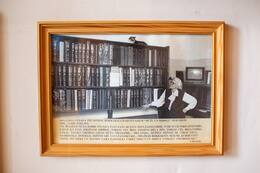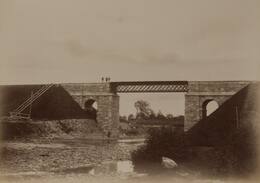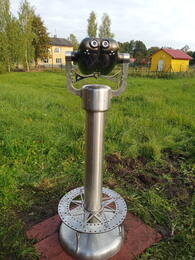Бой у моста через реку Амата
The Battle of Cēsis is one of the most important stages of the War of Independence of Latvia and occupies an important place in the history of the War of Independence of Estonia.
The Battle of Cēsis is one of the most important stages in the War of Independence of Latvia. It also holds an important place in the history of the War of Independence of Estonia. The Republic of Latvia was founded on November 18, 1918. Already in December 1918, the recently established Provisional Government of Latvia had to organise defence against the threat of Bolshevik troops approaching from Soviet Russia. At the end of December 1918, the recently formed National Guard units or Landeswehr in German, which were formed by Latvian, German and Russian subunits, retreated to Kurzeme. At the same time, the Provisional Government of Latvia sought help in Estonia, where, in February 1919, Latvians living in Estonia had started to form the so-called Northern Latvian brigade, which was incorporated in the Estonian army. On April 16, 1919, the German units of Landeswehr organised a coup in Liepāja, overthrowing the Provisional Government of Latvia, which was led by Kārlis Ulmanis, and establishing their own government under the leadership of pastor and writer Andrievs Niedra. When the units of Landeswehr regained Riga on May 22, 1919, this completely demoralised the Soviet forces, and they quickly retreated from Vidzeme to Latgale. The units of the Landeswehr followed them until they encountered the units of the Estonian Army and the Northern Latvian Brigade. A conflict started between the two sides, which developed into the Battle of Cēsis.
The battle at the bridge over the Amata River took place on June 5, 1919 between the armoured trains of the Estonian army and the German Landeswehr units. This clash started the first stage of the Battle of Cēsis, which lasted until the armistice concluded on June 10. The battles of Cēsis resumed with new power on June 19 with the attack of the Landeswehr and the Iron Division on Limbaži and the subsequent attack in the direction of Valmiera. Over several days of intense fighting, the Estonian army and the units of the Northern Latvian brigade stopped the attack, launched a counterattack, and finally defeated the Germans. The conflict was escalated by the intransigence of the two sides on the issue of military operations in Vidzeme - units of the Estonian Army and Northern Latvian Brigade attacked from the north and occupied territories up to Valmiera, and successfully advanced towards Gulbene and Madona, reaching Jēkabpils, while the Landeswehr's units had to reach the area of Ape - Alūksne. The Ieriķi – Gulbene and Ieriķi – Valka railway lines were important, providing transport and supply opportunities. Therefore, the opportunity to control the strategically railway junction in Ieriķi was important for both sides involved in the conflict.
After the liberation of Northern Vidzeme from the Bolsheviks, the high command of the Northern Latvian Brigade arrived in Cēsis on June 2. At the same time, an armoured German train arrived in Ieriķi and demanded permission to advance to Cēsis. The following days saw a show of force, intensive correspondence, and negotiations between the representatives of the Estonian Army, the Northern Latvian Brigade and Landeswehr, each side trying to achieve its goal: the Landeswehr - to continue their advance to the north, and the Estonian army - to make the Landeswehr retreat to the Mouth of the river Gauja - Sigulda - Nītaure – Vecpiebalga – Jaungulbene line.
To clarify the situation with the railways and check whether the Germans were destroying the railway, two Estonian armoured trains - No. 2. and No. 4 - slowly began to scout the situation in the direction of Riga on June 5, around 1:45 pm. Lieutenant-Colonel Nikolajs Rēks accompanied the trains and was responsible for the negotiations with the Landeswehr, the Chief of Staff of the Northern Latvian Brigade, Colonel-Lieutenant Voldemārs Ozols, and the United States of America military representative, Captain Dawley (or Colonel Warwick Greene according to other reports). Well-versed in the local conditions, a soldier of the 8th Student Company of the recently formed 2nd Cēsis Infantry Regiment, Kārlis Dzirkalis was also assigned to the operation. Near the bridge over the Amata, a guard soldier stopped the train, announcing that the Germans had mined the bridge. As the sappers were searching the bridge, shots suddenly rang out from the other side, injuring the Estonian sergeant and killing the officer. Immediately, a chain of Landeswehr soldiers appeared from the nearby forest and opened fire on the armoured train. At the same time, the Germans tried to surround the other train, but it drove them away with artillery fire.
The Battle of Cēsis stopped and limited Germany's expansion in the Baltics. The scale of these battles is comparable to the so-called Bermontiada in the autumn of 1919 near Riga. In Estonia, they are called Võnnu lahing, and the culmination of the victory of these battles - Victory Day on June 23 - is celebrated as a national holiday.
Learn more about the Battle of Cēsis along the dedicated touring route: In the footsteps of the Battle of Cēsis - https://militaryheritagetourism.info/en/tours
Zugehörige Zeitleiste
Zugehörige Themen
Zugehörige Objekte
Место отдыха «Meža kaujas»
Место отдыха «Meža kaujas» находится на месте основных Цесисских сражений у моста через Амату. Посетителям предлагается рассказ о Цесисских боях и различные программы - походы и поездки на важнейшие места Цесисских боев, командные бои. После этого посетители могут отведать бодрящий «боевой суп». Железнодорожный мост через Амату сыграл очень важную роль на протяжении всего периода Войны за независимость, так как здесь произошли первые столкновения между эстонской армией и ландесвером. 5 июня 1919 года у железнодорожного моста через Амату произошел первый бой эстонских эшелонов с прибалтийским подразделением ландесвера. Ландесвер, зная, что приближается бронепоезд, заминировал железнодорожный мост и занял позицию у дома «Аматас» на берегу реки, готовый к возможным боевым действиям. Мост через Амату разделял эстонские и немецкие силы.
В ночь на 23 июня 1919 года во время Цесисских сражений ландесвер покинул Цесис и отступил к линии реки Аматы. При отступлении немцы подожгли Цесисский дом латышского общества и взорвали мост через Амату.
Музей Мелании Ванаги и Сибирская землянка
Музей Мелании Ванаги располагается в сельской школе Амата Цесисского района. В музее представлены материалы о жизни, литературном творчестве, семье и судьбе писателя и историка культуры Мелании Ванаги: видеоматериалы о Сибири и проживающих там депортированных латышах, сибирская землянка – заочная поездка к месту депортации писательницы в село Тюхтет, Красноярского края. Внешний вид и планировка землянки дают реальное представление о жизни на чужбине. В землянке хранятся уникальные исторические предметы, привезенные из музея Тюхтета - березовая посуда туесок, глиняная кружка крынка и керосиновая лампа. В музее есть видеоинтервью с политически репрессированными людьми района и восемнадцатью героями книги Мелании Ванаги «На берегу Велюпе». Виртуальная выставка музея «БУДЬ СОБОЙ!» http://esipats.lv рассказывает о пяти депортированных детях и их родителях, которых советская власть безосновательно обвинила в «измене Родине».
Мемориальное место у станции Амата - эшелон № 97322
Находится в Драбешской волости Аматского уезда, недалеко от бывшего здания вокзала Амата.
Можно осмотреть мемориал депортированным с информационным щитом и сквером.
Всего 25 марта 1949 года и в последующие дни из Латвии в 33 эшелонах было вывезено более 42 тысяч человек.
27 марта 1949 года в два часа ночи со станции Амата выехал эшелон № 60 длинновагонов. 97322, из них 329 мужчин, 596 женщин, 393 ребенка.
Центральным объектом станут 1318 металлических столбов различных размеров и цветов. Каждый из них символизирует человека, взятого 25 марта 1949 года из тогдашних Цесисского и Алуксненского уездов. В каждой графе имя, фамилия, год рождения и приход - из которого человек был послан. На данный момент при поддержке самих депортированных или их родственников установлен 21 пост.
У автора идеи, самого Петериса Озоласа, тоже есть свой столб, который был взят из «Перконю» Косской волости вместе со своей семьей в возрасте шести лет 25 марта 1949 года.
Информация о депортации 1949 г. и операции «Прибой», проведенной репрессивными органами СССР в оккупированных Прибалтике, послужившей основанием для депортации, можно прочитать на информационном стенде.
Железнодорожный мост через Амату
Находится в Драбешской волости Цесисского края, недалеко от места отдыха «Межа кауяс».
Через Амату есть железнодорожный мост.
Железнодорожный мост через Амату играл очень важную роль на протяжении всей Освободительной войны, ведь 5 июня 1919 года здесь произошел первый бой вооруженных эшелонов эстонской армии с частями Балтийских ландесверов. Ландесвер, зная о приближении вооруженного поезда, наметил железнодорожный мост и занял позицию у дома Аматас на берегу реки, готовый к возможным боевым действиям. Мост через Амату был границей между эстонскими войсками и немцами.
Исторических свидетельств событий на Аматском мосту не сохранилось. Так как латыши не участвовали в этих событиях, нет нарративов их воспоминаний, есть воспоминания эстонских солдат и другие источники. Можно сказать, что это был совместный эстонско-американский бой против ландесвера, потому что на эстонском бронепоезде находился американский офицер, который позже также участвовал во Второй мировой войне. Вообще многие будущие офицеры и командиры Второй мировой войны принимали участие в боях под Цесисом, особенно на стороне немцев.
Эстонский вооруженный поезд прибыл в Цесис 2 июня 1919 г., через день отправился в Иерики, где состоялись переговоры с помещиком, которые не увенчались успехом, а 5 июня, когда вооруженный поезд вновь приблизился к мосту Амата, произошло столкновение с начали немцы. Через день вооруженный поезд также принял участие в боях под Цесисом, где помогал солдатам роты учеников, которым угрожала осада. Хотя немцы пытались разобрать рельсы, чтобы отрезать поезд от пути, ему удалось отступить по мосту Рауна.
В ночь на 23 июня 1919 года во время боев под Цесисом ландесвер покинул Цесис и отступил к линии реки Амата. При отступлении немцы сожгли дом Цесисского латышского общества и взорвали мост через Амату.
Virtuaalreaalsuse binoklid "Cēsise lahingud"
Cēsise lahing oli üks olulisemaid pöördepunkte Läti Vabadussõja (1918-1920) käigus. 5. juunil 1919 algas Cēsise lahingu esimene etapp kokkupõrkega Eesti sõjaväe soomusrongide ja Landesværi üksuste vahel Ierikai raudteejaama juures Amata silla juures. Selle sündmuse mälestuseks on Ierikai jaama lähedusse loodud turismiobjekt, mis pakub kaasaegse tehnoloogia pakutavaid võimalusi kasutades kogeda ajaloo lugu - virtuaalreaalsuse abil. Viieminutilist videot "LAHING ON THE BRIDGE FOR OFFICE" saab virtuaalreaalsuse binoklis iga päev tasuta vaadata. Video kestus: 5 min., LV subtiitritega LV, ENG, EST ja EU.




